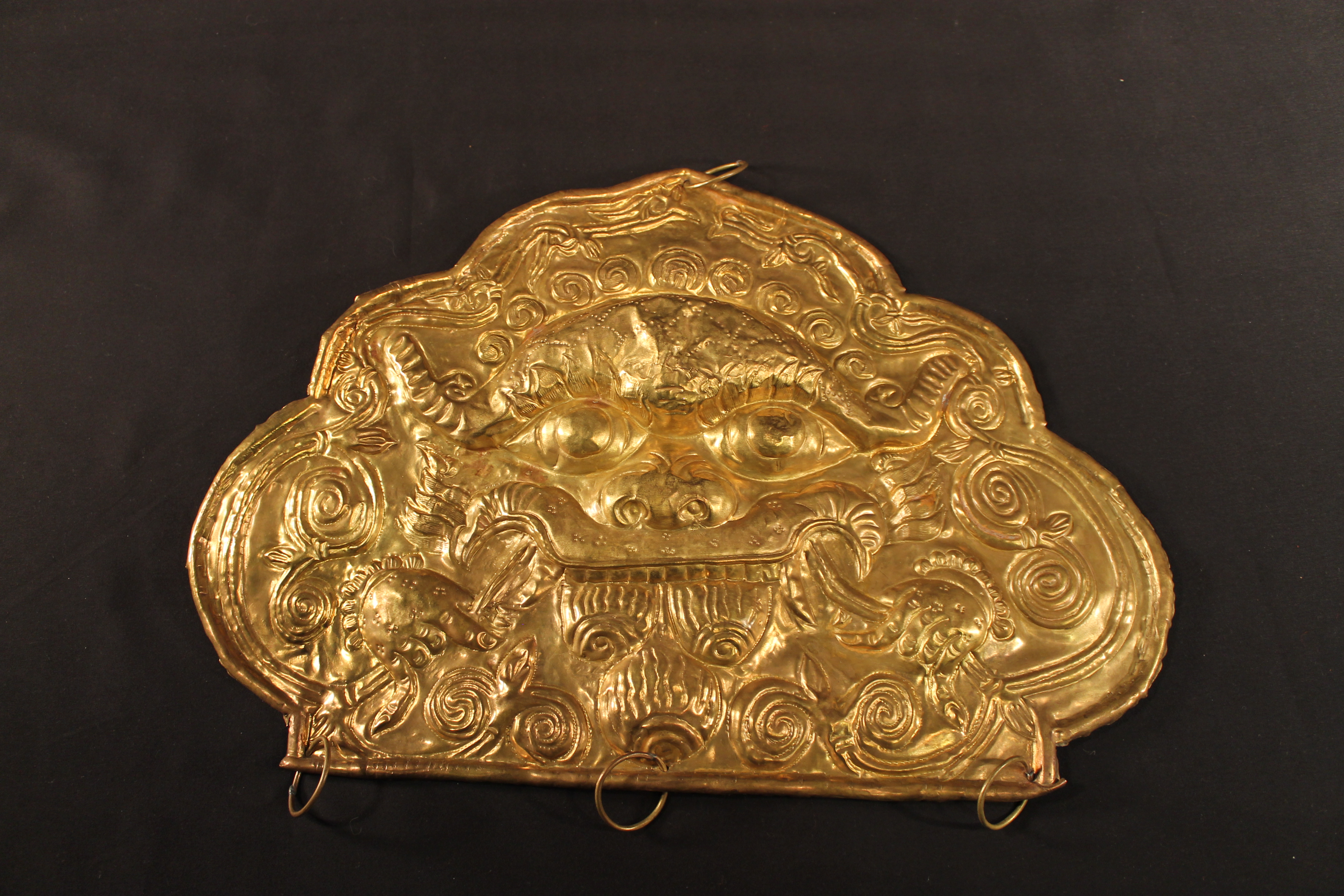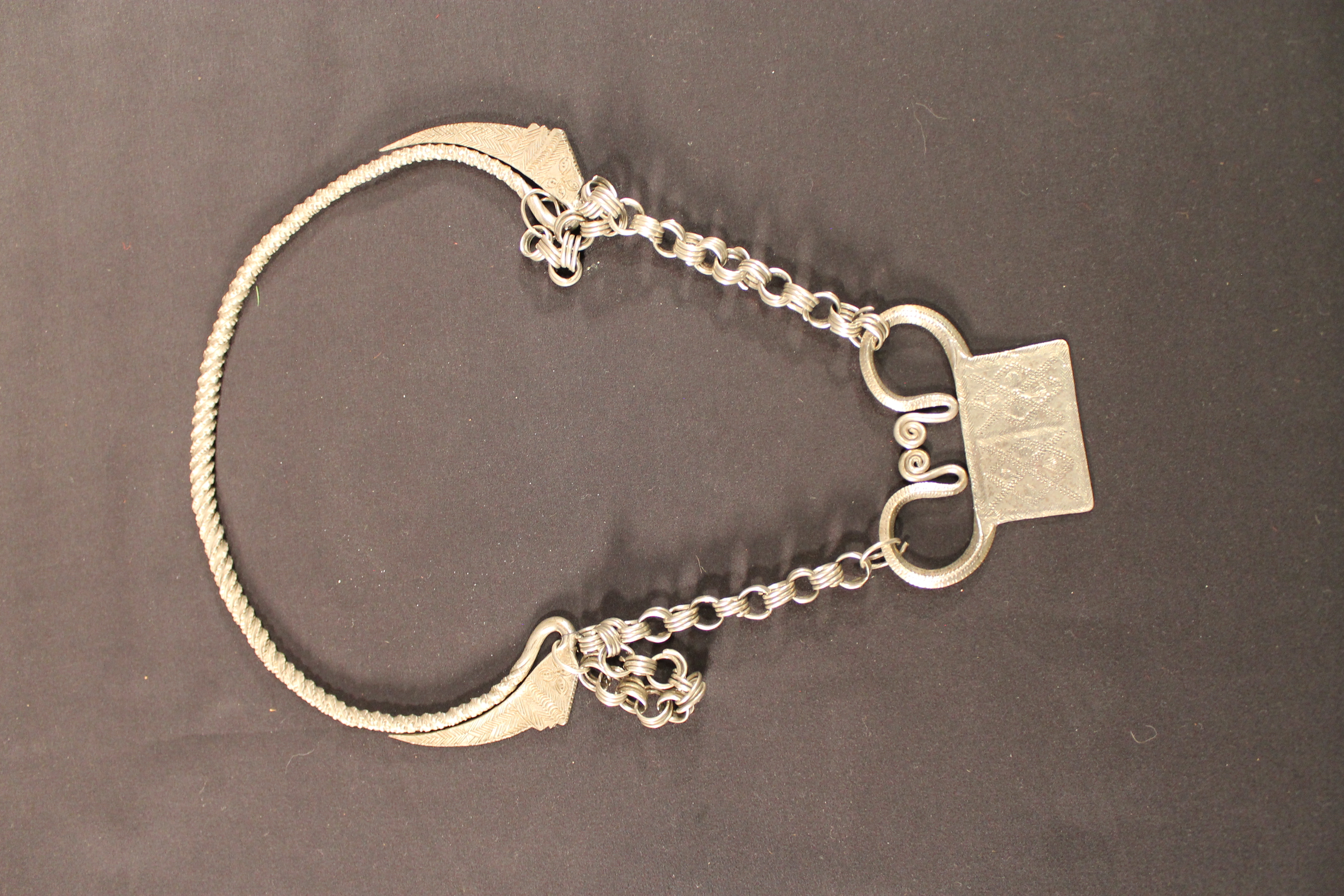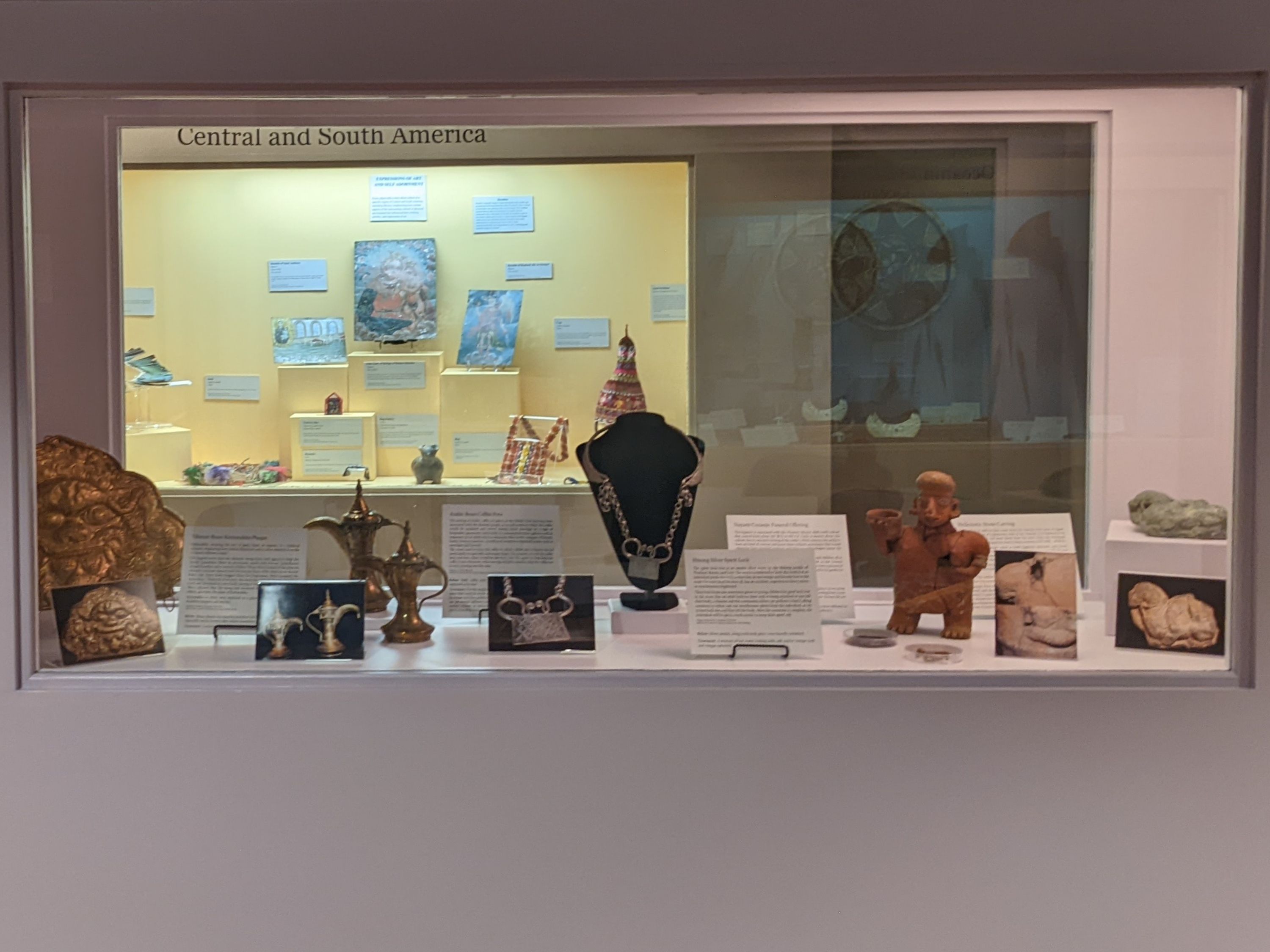From the Shadows to the Spotlight- Case 1
 Tibetan Brass Kirtimukha Plaque
Tibetan Brass Kirtimukha Plaque
Kirtimukha, meaning the face of glory, fame, or majesty, is a mythical monster originating from Indian Hinduism and is often referred to as the 'creature without a name'.
The legend states that the demonic being Rahu had agreed to help the demon Jalandhara illicit an incestuous union with Parvati, Jalandhara's adopted mother and a consort of Shiva. When Shiva learned of the plan, he created a creature-demon with the furious blaze of his third eye to devour Rahu, but when Rahu begged Shiva for forgiveness, Shiva accepted his repentance. Deprived of its prey, the ravenous creature-demon turned on itself and devoured its own body, leaving it with only its hands and head. Shiva, pleased that the being had devoured itself instead of turning on others, gave him the name of Kirtimukha.
Kirtimukha is often seen depicted as a guardian over the entrance of Buddhist temples and shrines.
Buddhist Temple Accessories Collection
1993.04.010 Lowell D. Holmes Museum of Anthropology
Before: Brass plaque was heavily tarnished and had numerous black spots, especially on the reverse side, which resembled patches of mold.
Treatment: A mixture of distilled white vinegar and salt.
Arabic Brass Coffee Pots
The serving of Arabic coffee, or gahwa, in the Middle East has long been associated with the Bedouin people as an old tradition where the coffee would be prepared and served during social meetings as a sign of hospitality, generosity, and wealth. In contemporary times, gahwa is still an important social drink that is consumed when in the company of friends, family, business partners, as well as at numerous important events such as marriages and funerals.
The vessel used to serve the coffee is called a dallah and is known for its particularly recognizable and unique shape. On occasion, as with the coffee pots seen here, there would be lids that cover the spout to help keep the coffee warm. However, when serving, the lid is raised so that the coffee can be seen pouring into the cups.
Marian D. Cook Collection
1994.04.014, 1994.04.019 Lowell D. Holmes Museum of Anthropology
Before: Both coffee pots were tarnished and had various spots that appeared to be rust.
Treatment: For the smaller coffee pot, I used flour with vinegar to create a paste that could sit on the uneven surfaces of the object. This was followed by a rinse and then polished with a polishing cloth that was acceptable for use on several different metals. For the larger coffee pot, I used Pre-lim surface cleaner to remove the tarnish and finished with Renaissance microcrystalline wax polish.
 Hmong Silver Spirit Lock
Hmong Silver Spirit Lock
The spirit lock box is an amulet often worn by the Hmong people of Thailand, Burma, and Laos. The amulet is believed to 'lock' the soul(s) of an individual inside the body so that they do not escape and become lost in the event the individual becomes ill, has an accident, experiences heavy stress, or even becomes frightened.
These lock boxes are sometimes given to young children for good luck, but in the event that an adult believes their soul is being attacked or has left their body, a shaman and the community elders can perform a Soul Calling ceremony to either cast out troublesome spirits from the individual, or try to lure back the soul that left the body. After the ceremony is complete, the individual will be given a lock amulet to keep their spirit safe.
Omega and Laura G. Cummins Collection
1988.05.037 Lowell D. Holmes Museum of Anthropology
Before: Silver amulet, along with neck piece, were heavily tarnished.
Treatment: A mixture of hot water, baking soda, salt and/or vinegar (salt and vinegar optional)
Nayarit Ceramic Funeral Offering
This figurine is associated with the Western Mexico shaft tomb culture that existed from about 300 BCE to 500 CE. Little is known about this culture due to extensive looting of the tombs, which removes the artifacts from any kind of context and leaves them without provenance that would otherwise have provided evidence and clues to archaeologists about the culture from which they came.
Common figurine representations include men, women, and children, all in various positions and performing different tasks, such as the woman figurine here carrying a basket. Even animals such as dogs were represented not only as sources of food but also may have been believed to be guides for the souls of the dead.
Aitchison Collection
1994.08.229 Lowell D. Holmes Museum of Anthropology
Before: This ceramic figurine had broken into multiple pieces at one point in time and was then poorly restored. Adhesive was protruding from cracks and certain ceramic pieces were put in incorrect locations. Several did not even belong with the figurine.
Treatment: Used dental tools and acetone to remove excessive adhesive as well as the pieces that did not belong. I used B-72 as an adhesive.
Hellenistic Stone Carving
This artifact is said to have come from the Aswam Dam area of Egypt. However, it is not of a pharaonic style of art. Instead, it is believed to be Hellenistic (Greek) and most likely from the time when the Ptolemaic Kingdom controlled Egypt for close to three centuries (305 ADE - 30 BCE).
Even though the dynasty ruled as both Egyptian pharaohs and Greek monarchs for almost 300 years, the Ptolemy family never actually became Egyptian, but remained isolated in the capitol city of Alexandria and remained Greek in their language, practices and traditions.
The last pharaoh of Egypt was the famous Cleopatra (Cleopatra VII), who ruled for 22 years before Egypt submitted to the rule of the Romans.
Before: This artifact was simply covered with a large amount of dirt and sand that was covering and making it hard to see the details of the statue.
Treatment: First the carving was rinsed with water to remove loose dirt and sand, and then gently scrubbed with a soft toothbrush. After drying the object, I used two dental tools as "scoops" to clear out the packed dirt from around the horse's neck under the reins and martingale. I finished by using a dampened Q-tip to clean the crevasses, but decided to leave a small amount of sand to help the details remain obvious.


